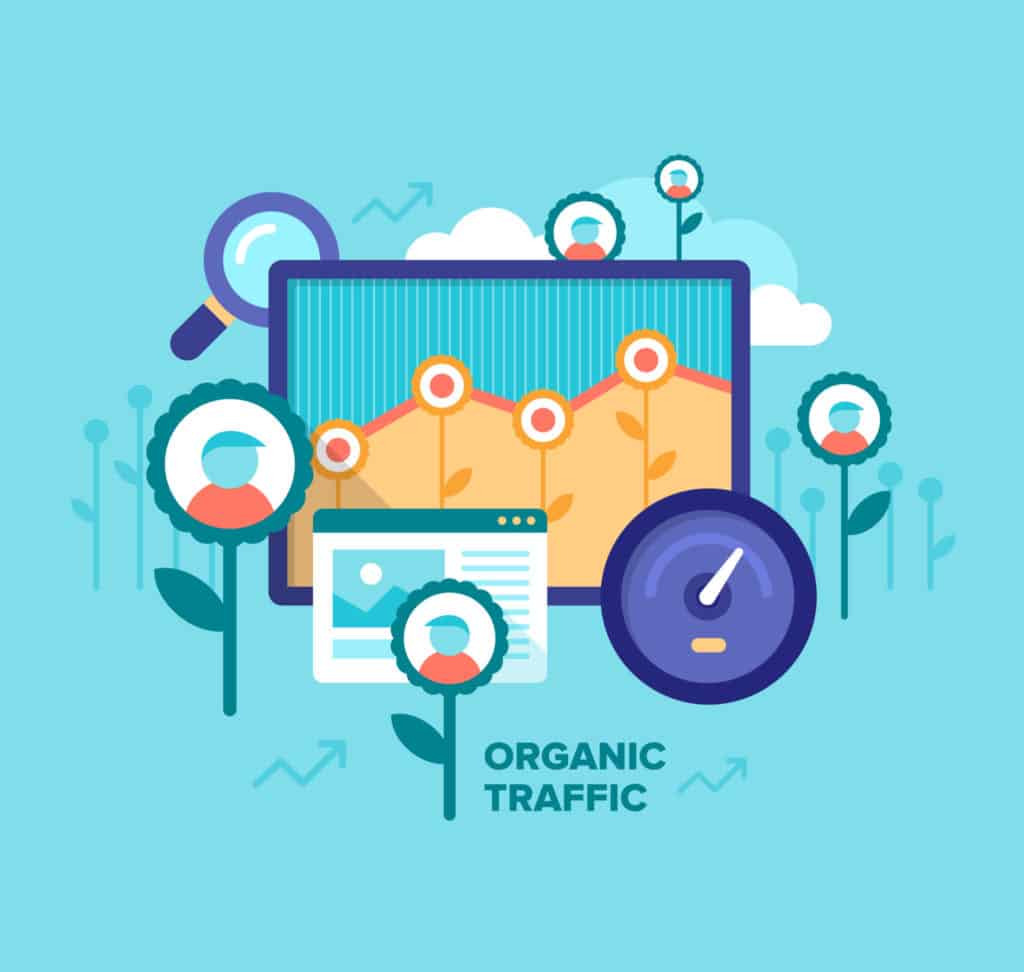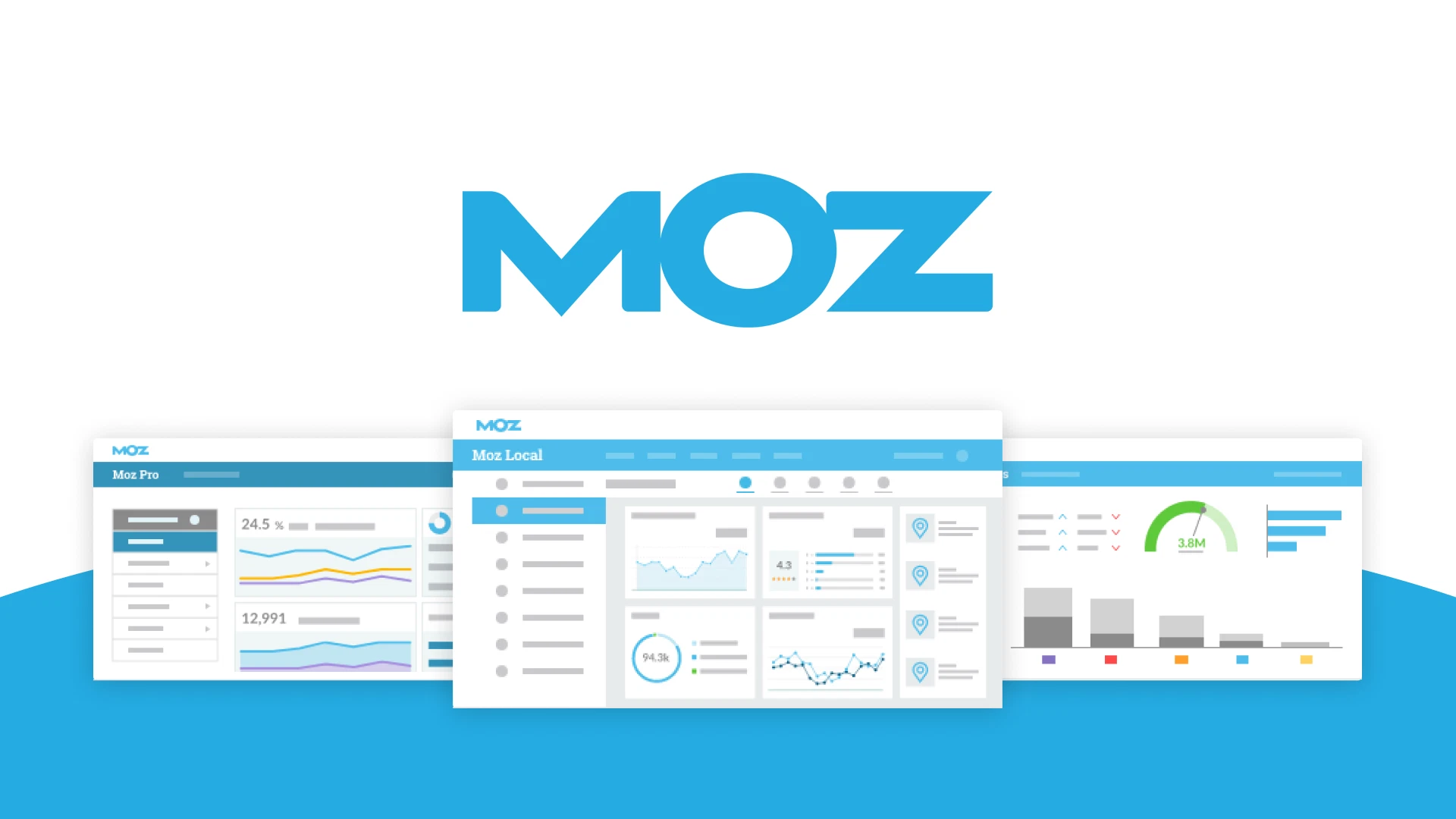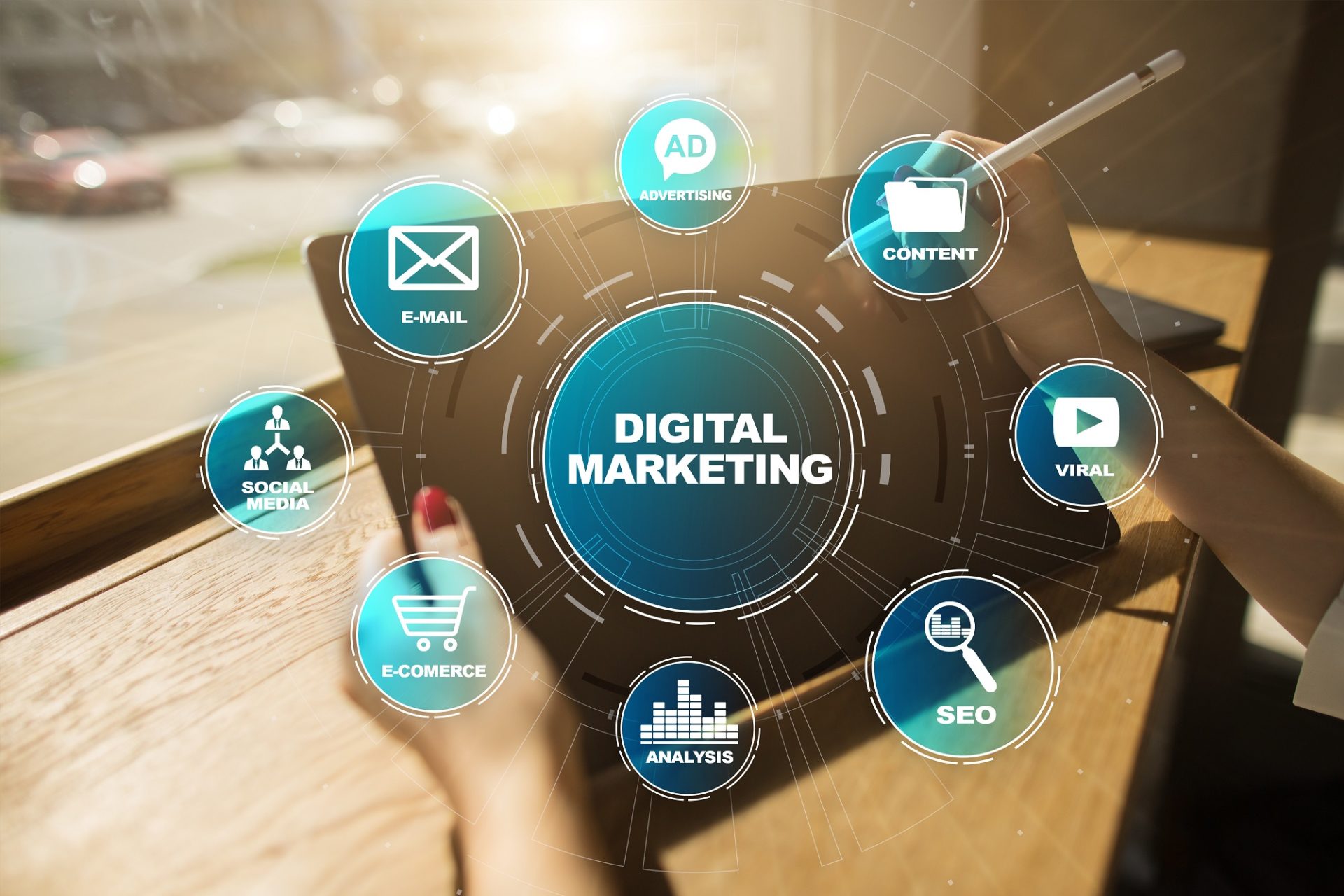Organic SEO marketing is necessary to benefit from better positioning in Google search results, better popularity and greater visibility. However, for SEO Specialist, to get there, it is essential to set up some strategies. With over 3.5 billion Google searches per day, to rank high enough for potential visitors to find your content, you’ll need to follow the rules of the number one engine. Below are 3 of them.
Table of Contents
ToggleOrganic SEO Marketing learns from itself
One of the best ways to fully utilize your content is to improve your search engine optimization (SEO) efforts. In today’s data-driven world, businesses need a way to analyze and interpret their SEO efforts to stay ahead. To achieve this, 73% of marketers use SEO tools to refine their content and improve their popularity on Google. By making small changes to the content, you can improve your chances of receiving organic traffic to your site. This post takes a look at how to produce better search engine optimization21 and achieve higher rankings on Google.
This is about breaking down and explaining SEO improvement tactics. Two solutions are generally used to perform this : draw up an exhaustive list of all the information published on the website, as well as its technical criteria and functionalities. Keep in mind that the SEO tools of a platform depend on several elements and interactions between them. Then contact third parties or entities. Indeed, they are usually experts in the field and they can provide you with valuable tips to improve your productivity, attract more customers, etc.
If you want to boost the organic SEO marketing of your website, the first step is to take stock of everything you have done so far. An in-depth analysis of your current techniques is indeed essential to know all its flaws. Afterwards, you can easily make improvements, which will allow you to get a better positioning in Google’s search results. After having studied all the content on your website, you must then proceed to the optimization phase. For this, it is necessary to put in place simple and effective organic SEO marketing techniques, having obviously defined your objectives beforehand.
If you want your strategies to match virtually all of the websites available on the web, you need to put the user experience at the heart of your business. For that, the navigation will have to be entertaining, fast and without bugs. On the other hand, published information should be of interest to Internet users and meeting all their needs and expectations. In other words, the satisfaction of users should be your main concern, otherwise the growth of your website ‘s organic SEO marketing will not be optimal. The use of a code generator has, for example, proved to be an interesting solution to delight Internet users.
Regular monitoring of new strategies is essential to ensure the stability and growth of the organic SEO marketing. Do not neglect this step because it is important for identifying potential flaws and modifying them quickly. Again, two solutions are most often used : self-study the implementation of procedures to analyze and monitor the content. These processes can be directly inserted into the website or come from a third-party platform such as Google Analytics for example. Else, you can reach to an expert in the field to follow the various steps of SEO techniques.
These SEO optimization techniques, for good positioning on search engines, are not the only ones for organic SEO marketing. Other practices are also accessible such as the analysis and optimization of behavioral signals (click and bounce rate , average duration of sessions, etc.). This analysis is carried out through the use of complementary levers such as communication on social networks, posting in blogs, e-mailing campaigns, a mobile application, the opinions and comments posted on the Internet across blogs and different social media, etc.
Targeted SEO helps generate qualified traffic thanks to good search engine positioning. It will lead you to gain notoriety and loyalty with a target of Internet users interested in your business.
The years go by, the basics of natural referencing remain the same but new SEO strategies emerge. Here is a summary, from SEO Specialist, of the 8 most important SEO strategies to apply in your SEO Marketing campaign during 2025.
SEO Marketing is all about quality content
Voluntarily put first, this strategy that has lasted for many years has never been as true as in 2025. Google no longer wants 300-word articles rewritten (or written quickly) just to pretend « unique content » in the SEO Marketing campaign. The attention of Internet users is very easily lost and Google knows it, that is why it rewards useful, detailed, but also pleasant content to read.
This means offering the right content, products and services, according to the request of the user that is targeted, while caring for the user experience in the SEO Marketing campaign. The idea is also not to try to « fight » on keywords where we have 0 legitimacy to be well placed, because you will be wasting your time, money and resources that you could have allocated on more relevant keywords with much better ROI.
For example, if your brand only offers « Shoes made in China », it is useless that you try to target the keyword « Shoes Made in France » by highlighting that your products are 100% Made in China. On the other hand, a blog article on the concrete differences between Made in China and Made in France could be relevant for the user who is looking for this. You can thus suggest most of the time a relevant alternative but you will need, above all, to observe what brings you more than just traffic.
Now that almost all websites are in HTTPS, Google has been interested, for a few years, about the loading time of pages ! The search engine optimization of loading time is a priority to be clearly not neglected your SEO Marketing campaign during 2025, especially when the navigation is mainly done on mobile! Do not hesitate to check out the Google PageSpeed Tools that offer a calculation mode to let you know about the loading time of your website.
Quality content is good, with quality links, it’s better. In 2025, your SEO Marketing campaign will always have to include quality links to rank on competitive topics. The good news is that you need less links than before, even on very competitive topics. Quality is essential! Take the time to ask yourself what quality links are for you, and focus your 2025 netlinking strategy on what you think is most relevant.
Analysis is the basis of any SEO Marketing campaign : what are your best performing pages? Why do they perform better than others? What are the least competitive keywords and the most important one to target in matter of ROI? Why is your bounce rate high here and not elsewhere? Which pages should be updated first? What are the concrete differences between the best positioned competitors and you? Which pages are useless and to delete?
At equal SEO positions, you can earn a significant share of traffic over a year by simply optimizing snippets (excerpts of your pages in the search results). For this, there are several levers available for your SEO Marketing campaign : the title, the meta description, the URL, adding emojis to your snippets, etc.
In 2025, video marketing has clearly taken a new track in every SEO Marketing campaign. To optimize the user experience of your website in 2025, the use of an explanatory or presentative video of your product is increasingly recommended. Indeed, it will improve the conversion rate of your traffic and limit the bounce rate ; two indicators monitored closely by Google.
If the optimization of the long tail is not a new strategy in itself, it is one of the essential strategies to boost your SEO Marketing campaign and get qualified traffic on any website. Many studies show that long tail keywords carry much more qualified and profitable traffic than the short ones, so why not?
Google is now able to adapt and customize the search results very accurately and dynamically, and these strategies should not be absent from your SEO Marketing campaign, towards higher ranks in search engines. Feeling lost ? Hire SEO Specialist and let us do the rest !
As we move deeper into the intricacies of organic SEO marketing, it becomes clear that the digital ecosystem is not just about technical implementation or keyword saturation, but strategic alignment between user needs, business goals, and algorithmic favor. Organic SEO today is a delicate balance of relevance, authority, and usability. At its core, it isn’t simply about getting on the first page of Google, but earning that space through consistent value, trusted credibility, and adaptive learning.
SEO campaigns that succeed in 2025 take advantage of machine learning (ML) not just in Google’s algorithm, but in the way brands analyze their own data. AI-powered SEO tools now allow marketers to identify gaps in content, anticipate seasonal trends, and automate tedious processes like metadata optimization or image compression. These tools don’t replace strategy, but enhance it. They give SEO specialists a predictive edge, allowing for proactive rather than reactive campaigns.
Voice search and AI assistants like Google Assistant or Siri are also reshaping organic SEO marketing. A rising number of queries are now conversational or question-based. This trend demands a more natural tone in content creation, focusing on how real people speak. Phrases are now driving traffic, meaning your SEO copy needs to reflect this user behavior. Structured data, FAQ schemas, and concise answers placed in the right context are becoming critical for securing featured snippets or voice search placements.
Meanwhile, local SEO continues to rise in importance, especially for businesses with a physical presence. With the local search volume skyrocketing, accurate name, address, phone number listings, reviews, and location-based keywords are non-negotiable. Google My Business optimization, once optional, is now a mandatory part of every local SEO campaign.
While backlinks remain a pillar of organic SEO marketing, the source of those links is under greater scrutiny than ever. No longer can a site purchase mass links from random directories and expect success. Google penalizes such activity swiftly. Instead, successful SEO campaigns in 2025 focus on digital PR strategies, securing links through interviews, collaborations, expert roundups, and guest contributions on reputable platforms. The link must be earned, and it must make contextual sense.
One often overlooked but increasingly critical factor is content freshness. Even the best-written articles fade into irrelevance if they are outdated. Search engines prioritize recency, especially on fast-moving topics like technology, finance, and health. An SEO specialist must schedule content audits to revisit old posts and update statistics, revise old references, or add new sections that reflect the current context. Doing so sends positive signals to search engines and helps maintain high rankings.
Additionally, user intent segmentation is changing organic SEO marketing. It is no longer sufficient to chase volume. Instead, relevance is the guiding metric. Is the user looking to buy, learn, compare, or decide ? Content should mirror this intent. An eCommerce product page should not be optimized like a blog post. An informative article shouldn’t sound like a sales pitch. Matching content types to searcher intent is vital for conversion and dwell time.
Successful organic SEO in 2025 is multidimensional. It thrives on technical robustness, including site speed, mobile responsiveness, and crawlability, but flourishes only when paired with user-first content, earned authority, and ongoing adaptability. For those willing to invest the time, strategy, and creativity, SEO remains one of the highest-ROI digital channels available.
Another emerging force in the landscape of organic SEO marketing is semantic search. Google’s algorithms are no longer just matching keywords, but interpreting meaning. Semantic SEO involves crafting content that comprehensively answers user questions and naturally includes related terms and concepts. This means it’s no longer enough to write a blog post and fill it with a keyword ten times. Instead, your content should organically include different relevant terms. These related concepts help search engines understand the broader context of your content and make it more likely to be served to the right audience.
The importance of content clusters has also taken center stage. Rather than publishing isolated blog posts, websites are now building entire topic ecosystems. A central pillar page covers a broad subject, while cluster pages dive deep into subtopics. These pages are interlinked, creating a strong internal linking structure that helps search engines understand the hierarchy of your content. This approach not only improves indexing but also boosts user navigation, keeping visitors engaged longer.
Equally essential in organic SEO marketing is accessibility. Ensuring your website is usable for all users, including those with disabilities, is both a best practice and an SEO advantage. Google takes accessibility indicators into account when ranking websites. Using proper heading structures, alt text for images, descriptive anchor text for links, and keyboard navigation options can positively influence SEO performance. These factors not only help with compliance but also improve your site’s usability for all visitors.
In the ever-evolving SEO environment, user-generated content (UGC) has become a double-edged sword. While customer reviews, comments, and community forums can add rich, authentic content that boosts long-tail keyword reach and enhances user trust, poorly moderated UGC can lead to duplicate content issues or even spam flags. Moderation tools and structured guidelines are necessary to ensure this content remains an asset rather than a liability.
The technical aspect also remains a fundamental aspect of organic SEO marketing. Broken links, unnecessary redirects, bloated CSS or JavaScript files, and poorly optimized images can all slow down your site and damage rankings. XML sitemaps, robots files, canonical tags, and proper schema markup are non-negotiables. Moreover, mobile-first indexing means your smartphone’s version of the site is now the primary one that Google evaluates. If your desktop site looks beautiful but your mobile experience is clunky or incomplete, your rankings will suffer.
Another powerful trend is the integration of branding into SEO. More than ever, Google favors trusted, recognizable brands. This is especially evident in topics such as health, finance, or legal content, where Google demands a high standard experience, expertise, authoritativeness, and trustworthiness. Citing credible sources, having a clear presentation page, and showcasing the credentials of your authors are essential to establishing trust. Even seemingly small details like HTTPS security, privacy policy pages, and transparent contact information contribute to a site’s credibility score in Google’s eyes.
Content repurposing is another underutilized tactic in sustainable organic SEO marketing. A well-performing blog post can be transformed into a YouTube video, an infographic, a podcast episode, or a LinkedIn post. This not only diversifies your traffic sources but strengthens your content authority across platforms. Every new format provides an opportunity to earn backlinks, attract new audiences, and boost your visibility in multiple formats of search, namely text, video, image, and news.
One can’t ignore the strategic role of behavioral data. Metrics like bounce rate, dwell time, pages per session, and return visits tell a story that Google listens to. If users click through to your site but immediately leave, it signals poor relevance. If they stay and engage with multiple pages, that indicates value. Optimizing for these behaviors, through better UX design, internal linking, compelling CTAs, and scannable content layouts, is key to turning traffic into lasting SEO equity.
Organic SEO marketing is no longer isolated. It’s now deeply integrated with content marketing, UX design, social media, and even customer support. The lines between departments are blurring, and collaborative SEO strategies that involve writers, developers, designers, and analysts tend to outperform individual efforts. Modern SEO requires a team mindset, where data informs creativity and where every piece of content has both user value and strategic intent.
The evolution of SEO into a dynamic, interdisciplinary practice means that staying ahead requires not just technical fluency or keyword research skills, but a comprehensive understanding of digital behavior, content psychology, and emerging technologies. It is a long-term investment, slow to build but incredibly powerful once it gains momentum. For brands willing to commit to this ongoing evolution, the rewards are not just rankings, but authority, trust, and enduring visibility in an increasingly digital world.









